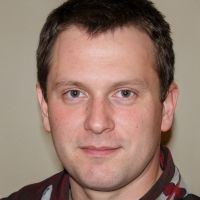The Rise of Autonomous Racing
Auto racing has always been about pushing the limits of human ability and technology. But in recent years, a new player has emerged on the racing scene: autonomous vehicles. Autonomous racing is the future of auto racing, and it is rapidly gaining momentum.
Autonomous racing is the ultimate test of cutting-edge technology. It requires advanced software and hardware to control vehicles without any human input. These vehicles must be able to navigate the track and respond to changing conditions in real-time, making decisions at speeds that would be impossible for a human driver. As the technology continues to advance, the potential for autonomous racing is limitless.
The Advantages of Autonomous Racing
One of the biggest advantages of autonomous racing is safety. With no human drivers in the vehicles, the risk of injury and death is greatly reduced. In fact, autonomous vehicles have the potential to eliminate the vast majority of accidents that occur on the road and track. This makes it possible for drivers to push the limits of the technology without risking their lives.
Another advantage of autonomous racing is the potential for increased performance. Autonomous vehicles are able to make split-second decisions that would be impossible for a human driver. They can analyze data from sensors and cameras, adjust to changing conditions on the track, and optimize their performance in real-time. This could lead to faster lap times, better fuel efficiency, and improved handling.
The Challenges of Autonomous Racing
Despite the many advantages of autonomous racing, there are still some significant challenges that must be overcome. One of the biggest challenges is the technology itself. Autonomous vehicles are still in the early stages of development, and there are many technical hurdles that must be overcome before they can compete on the same level as human drivers.
Another challenge is the cost. Autonomous vehicles require expensive hardware and software, and the cost of developing and maintaining these systems can be prohibitive. This means that only a select few teams may be able to compete in autonomous racing in the near future.
The Future of Autonomous Racing
Despite the challenges, the future of autonomous racing is bright. The technology is advancing rapidly, and it is only a matter of time before autonomous vehicles are able to compete at the highest levels of racing. As the technology becomes more widespread and more affordable, we may see a new era of racing that is safer, faster, and more exciting than ever before.
Autonomous racing is not just a new way to race—it is a new way to think about racing. It is a new frontier that is pushing the limits of technology and human ingenuity. As we look to the future of racing, we can be sure that autonomous vehicles will play an increasingly important role in shaping the sport.

